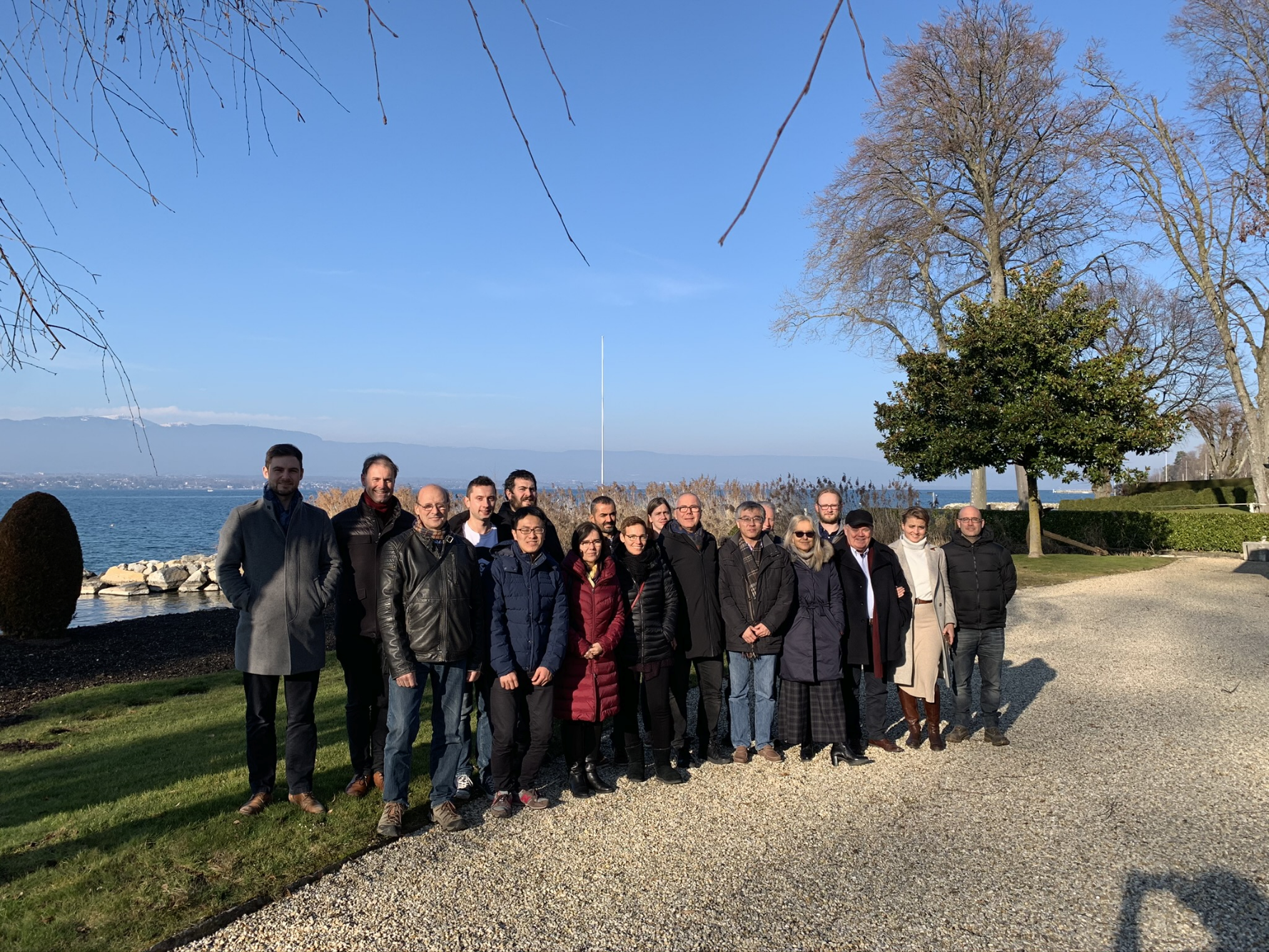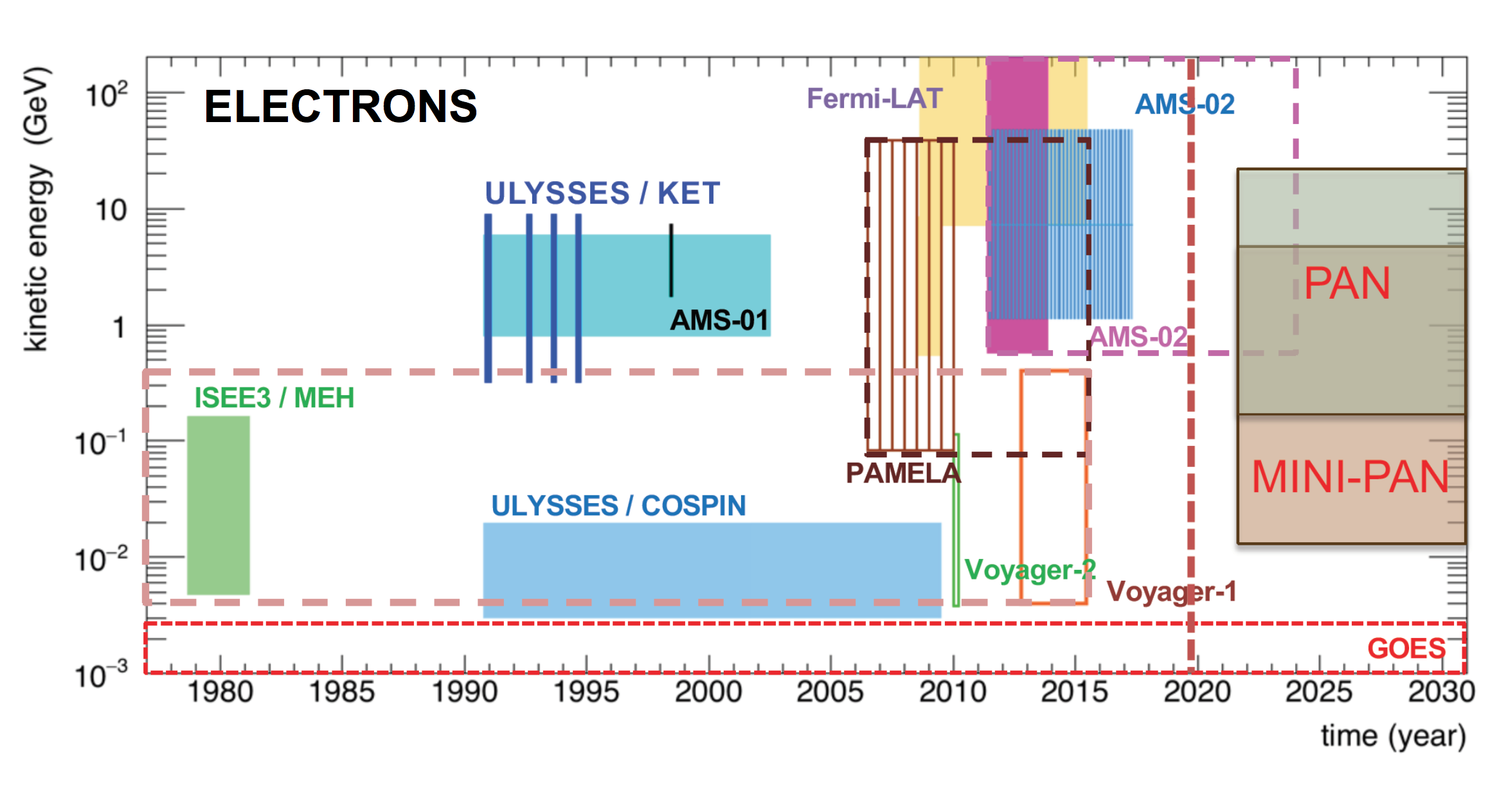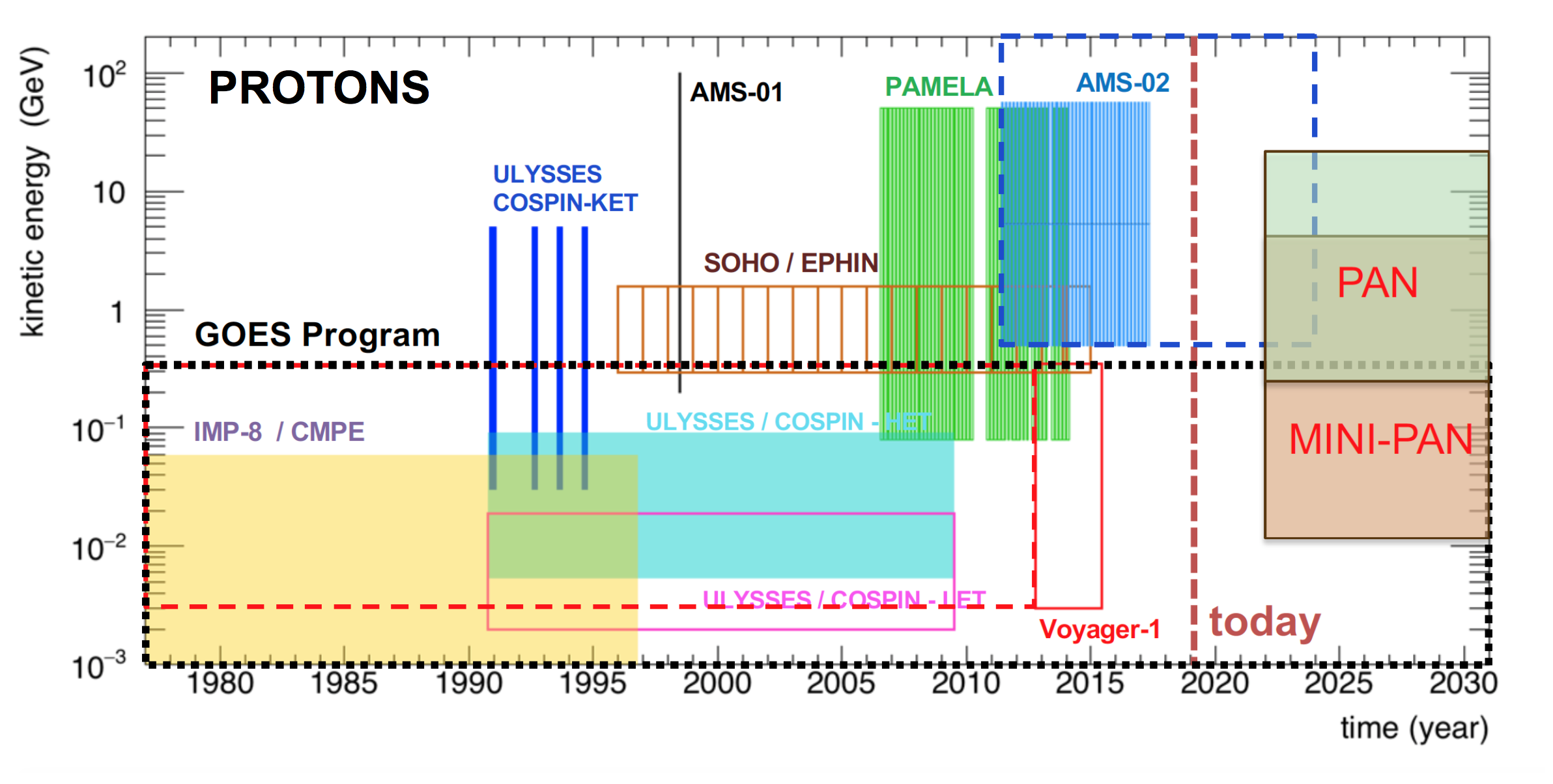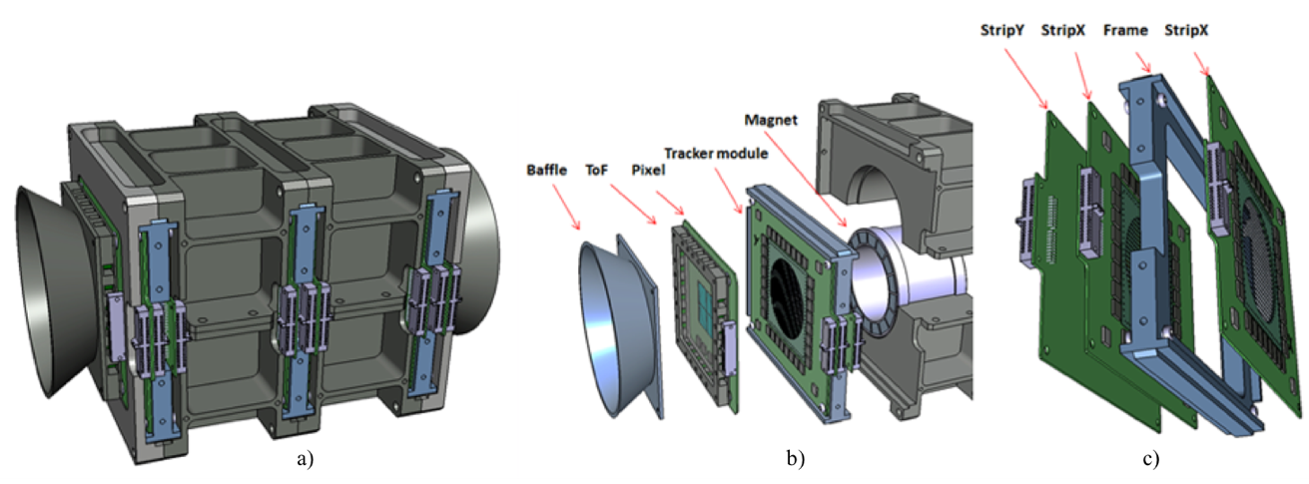Development of a demonstrator for the Penetrating Particle Analyser (PAN) technology
Penetrating Particle ANalyser (PAN) is a H2020 project to develop a particle detector for space missions to study energetic particles in the energy range 100 MeV/n up to 20 GeV/n. The outcome after 3 years will be a demonstrator version (mini.PAN).
Consortium:
- University of Geneva, Department of Nuclear and Particle Physics
- Istituto Nazionale Di Fisica Nucleare (INFN), Sezione di Perugia
- Czech Technical University, Institute of Experimental and Applied Physics
 |
Science background: Energetic particles in space can be emitted by the Sun, as Solar Energetic Particles (SEPs), or by galactic sources, as Galactic Cosmic Rays. Trapped populations are also found in planetary magnetospheres. Precise measurements of their energy spectra and composition in the 100 MeV/n to 20 GeV/n energy range are of great interest to study Solar Modulation of Cosmic Rays, to characterise SEPs, as well as the radiation environment around planets and to improve Space Weather predictions for Deep Space travels.
Measurement principle: The instrument uses the magnetic spectrometer principle for particle identification. This technique is currently well established in Low Earth Orbits, while deep space missions rely on the dE/dx vs. E method and are thus limited in energy range. The PAN instrument aims at filling the current observational gap in deep space radiation monitoring proposing a modular spectrometer suitable for long distance missions.
 |
 |
Science potential for the PAN instrument in comparison with ongoing missions. PAN will fill the observational gap for deep space missions.
 |
Drawing of the mini.PAN instrument and its subsystems. The Time-of-Flight system (expected time resolution ~100 ps) will be used to determine the particle direction of flight. The pixel and strip detectors are used to determine 3D particle trajectories and the dE/dx.
IEAP involvement: IEAP CTU is responsible for the development and integration of the pixel detector subsystem. The pixel detector part will consist of two Timepix3 Quads or alternatively two Timepix4 at the entrance and exit of the instrument. IEAP profits hereby from its previous experience in the application of Timepix detectors for space radiation monitoring (e.g. SATRAM).
IEAP team: Benedikt Bergmann (benedikt.bergmann@utef.cvut.cz), Petr Burian, Yesid Mora, Milan Malich, Lukáš Meduna, Petr Mánek, Stefan Gohl, Stanislav Pospisil, Jaroslava Merunkova.
Further reading:
- Wu et al, “Penetrating particle ANalyzer (PAN)”, Advances in Space Research, Volume 63, Issue 8, 2019, Pages 2672-2682, ISSN 0273-1177, https://doi.org/10.1016/j.asr.2019.01.012.
- https://indico.esa.int/event/322/sessions/1100/attachments/3682/5014/D3S_PAN_XinWu.pdf



